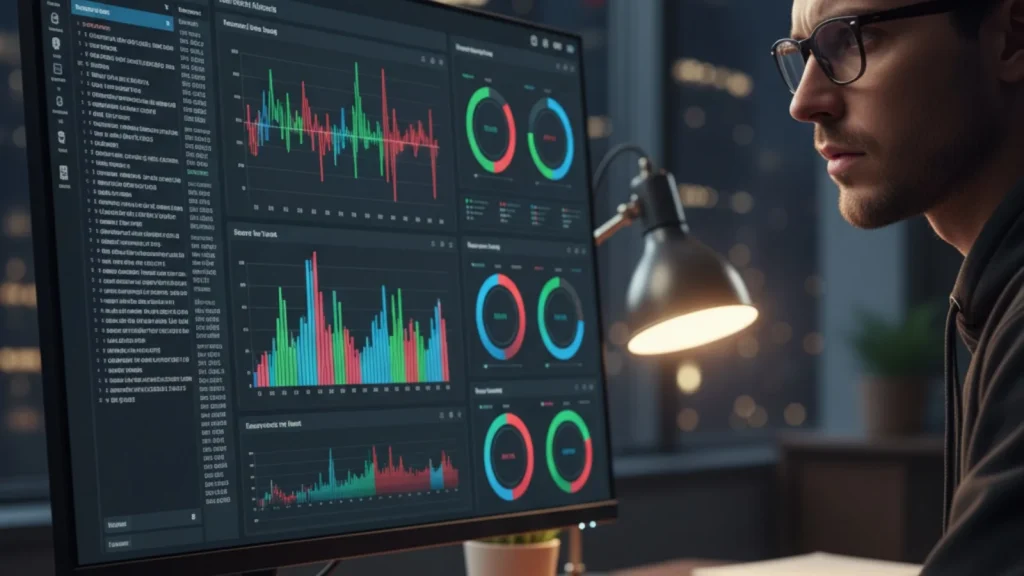In today’s cybersecurity landscape, organizations generate massive amounts of log data from firewalls, intrusion detection systems, servers, endpoints, and applications. Turning that raw data into actionable intelligence is critical for staying ahead of cyber threats.
One of the most widely adopted tools for this task is Splunk, a powerful platform for searching, analyzing, and visualizing data. By learning to use it effectively, security analysts can uncover hidden threats, monitor suspicious activities, and respond to incidents with confidence.
This blog will guide you through the essentials of using this platform for threat detection and analysis, explain why it’s so effective for cybersecurity, and provide insights into learning paths and certifications. If you’re looking to enhance your monitoring skills, read on.
What Is Splunk?

Splunk platform is designed to help organizations make sense of large amounts of machine-generated data. It collects logs and events from across IT infrastructure and security tools, then provides a centralized interface for querying and reporting. Originally developed for IT operations, it has become a cornerstone in security because of its ability to process massive amounts of information in real time.
Some of the main ways it’s used include:
- Log aggregation – Collecting logs from various sources into one system.
- Search and query – Using its Search Processing Language (SPL) to filter, analyze, and correlate events.
- Dashboards and visualization – Creating real-time reports and charts for monitoring.
- Alerting – Automatically notifying teams when specific patterns or anomalies are detected.
In short, Splunk is not just a logging tool—it’s a data intelligence platform that helps teams turn noise into insights.
Why Use Splunk in Cybersecurity?

Modern cyber threats are often sophisticated and distributed. Detecting them requires collecting and correlating data from multiple layers of an organization’s IT environment. Splunk stands out in security operations for several reasons:
- Centralized Monitoring: Instead of manually inspecting individual logs, everything is aggregated into one searchable repository.
- Real-Time Detection: Events are processed as they are ingested, enabling analysts to detect and respond to suspicious activity quickly.
- Custom Rules: Analysts can write SPL queries to detect attack patterns, such as brute-force login attempts or lateral movement.
- Integration with Security Tools: It works with SIEM systems, intrusion detection/prevention tools, endpoint monitoring, and even threat intelligence feeds.
- Compliance and Reporting: Helps organizations meet regulatory requirements like GDPR, HIPAA, or PCI DSS by generating audit-ready reports.
For businesses, Splunk is not just about identifying threats but also about strengthening overall security posture and maintaining compliance.
Key Features for Analysts

To understand why Splunk is a go-to solution for analysts, let’s break down its most important features:
- Search Processing Language (SPL): SPL allows detailed searches and correlation across millions of log entries.
- Dashboards and Visualizations: Interactive dashboards let analysts visualize threat trends, top sources of attacks, and incident timelines.
- Real-Time Alerts: The system can trigger alerts via email, Slack, or integrated security platforms when a rule is matched.
- Machine Learning Toolkit (MLTK): Analysts can apply anomaly detection and predictive analytics for proactive detection.
- Role-Based Access Control: Ensures that sensitive data is accessible only to authorized users.
- Scalability: Suitable for small organizations or enterprise-scale deployments with terabytes of daily logs.
These features make Splunk equally valuable for SOC (Security Operations Center) teams, incident responders, and compliance officers.
Setting Up for Log Monitoring

Getting started with Splunk involves a few essential steps:
Installation and Deployment:
- The platform is available in both an Enterprise version (paid, full-featured) and a Free edition (with limited indexing capacity).
- It can be installed on Windows, Linux, or deployed in the cloud.
Data Ingestion:
- Logs can be collected from firewalls, IDS/IPS, web servers, endpoints, and cloud platforms.
- Forwarders (lightweight agents) send data from distributed sources to the indexer.
Indexing and Storage:
- Data is indexed for fast searching.
- Teams can set retention policies to balance cost and compliance.
Building Dashboards and Alerts:
- Analysts can create customized dashboards for monitoring threats in real time.
- Alerts can be configured for brute-force login attempts, unusual user activity, or traffic spikes.
Correlation Rules:
- For example, you can create a rule that triggers an alert if a user logs in from two different countries within an hour—a strong indicator of compromised credentials.
By setting Splunk up properly, security teams gain the ability to monitor and respond to threats proactively rather than reactively.
Use Cases in Threat Detection

Splunk technology is widely adopted in Security Operations Centers (SOCs) around the world. Here are some of its most common use cases:
Intrusion Detection:
- Detecting port scans, brute-force attacks, or malware callbacks by correlating firewall and IDS logs.
Insider Threat Monitoring:
- Identifying suspicious employee behavior, such as large data downloads or unusual login patterns.
Endpoint Threat Detection:
- Analyzing antivirus and EDR logs to spot malware infections or privilege escalation attempts.
Cloud Security Monitoring:
- Monitoring AWS, Azure, or GCP logs for unauthorized access or misconfigurations.
Phishing and Credential Theft:
- Detecting repeated login failures or impossible travel scenarios (logins from two distant countries within minutes).
Compliance Reporting:
- Automating reports to demonstrate adherence to cybersecurity standards.
These use cases show how it serves as a SIEM solution that not only monitors threats but also helps automate detection and reporting.
Learning Resources and Certification Options

If you’re interested in building a career in cybersecurity or enhancing your threat detection skills, mastering this tool is a huge advantage. Fortunately, there are many resources available:
- Official Documentation: Provides a solid foundation for installation, configuration, and SPL queries.
- Education Courses: The vendor offers training ranging from fundamentals to advanced threat hunting.
- Certifications:
- Core Certified User
- Core Certified Power User
- Enterprise Certified Admin
- Enterprise Security Certified Admin
- Online Learning Platforms: Websites like Udemy, Coursera, and LinkedIn Learning provide beginner-friendly tutorials.
- Hands-On Labs: The best way to learn is by practice. The free trial and lab environments let you ingest logs and write SPL queries firsthand.
For aspiring SOC analysts and cybersecurity professionals, certifications can significantly boost career opportunities.

Frequently Asked Questions
Is Splunk free to use?
Yes, there is a free edition that allows indexing up to 500MB of data per day. For larger deployments and enterprise features, a paid license is required.
Do I need programming knowledge to use Splunk?
Not necessarily. Basic usage relies on SPL queries, which are easier to learn than full programming languages. However, scripting knowledge (Python, Bash) can help with automation and integrations.
What are the alternatives to Splunk?
Popular alternatives include Elastic Stack (ELK), Graylog, and QRadar. While these tools may be open-source or more cost-effective, the platform discussed here remains popular due to its scalability and enterprise support.
Take the Next Step in Cybersecurity
This platform has become one of the most important tools for monitoring and threat detection. By mastering its features—search queries, dashboards, alerts, and integrations—you can transform raw data into powerful insights that protect organizations from evolving cyber threats.
If you want to gain hands-on experience and build a strong career in cybersecurity, consider enrolling in the Bilişim Academy Cybersecurity Course. This program covers this platform alongside other essential tools and techniques, helping you become job-ready in today’s competitive security industry.
Start your cybersecurity journey today with Bilişim Academy and unlock your potential as a security professional!
In collaboration with our trusted SEO and Media Planning partner, we are proud to deliver cybersecurity education supported by strategic digital expertise.




